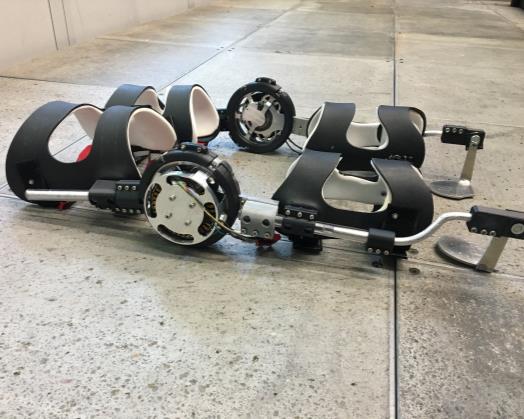PI’s: Aaron Young, Kinsey Herrin, & Kelly Moore
Funded by: Imlay Foundation
 Mobility is one of the most crucial activities of daily living, which highly influences one’s quality of life [1] and independence. For children with walking disabilities, lack of independence can lead to a lack of development in physical, mental, and social aspects. Often times, their physical ability does not develop at the same pace as their physical growth, which eventually leads to loss of mobility as they age [1, 2]. Exoskeletons, which are wearable robotic devices, have the potential to enhance and even restore the mobility of children with physical disabilities. Unfortunately, lower limb exoskeletons have not been accessible to children as there are no commercial systems for pediatrics due to the small market and the challenges of designing a device that is tiny yet functional.
Mobility is one of the most crucial activities of daily living, which highly influences one’s quality of life [1] and independence. For children with walking disabilities, lack of independence can lead to a lack of development in physical, mental, and social aspects. Often times, their physical ability does not develop at the same pace as their physical growth, which eventually leads to loss of mobility as they age [1, 2]. Exoskeletons, which are wearable robotic devices, have the potential to enhance and even restore the mobility of children with physical disabilities. Unfortunately, lower limb exoskeletons have not been accessible to children as there are no commercial systems for pediatrics due to the small market and the challenges of designing a device that is tiny yet functional.
Our research team plans to address this unmet need in pediatric physical rehabilitation by using smart robotic exoskeleton devices intended to improve the rehabilitation process in children with genu recurvatum and crouch gait. Robotic rehabilitation using exoskeleton technology carries advantages in various aspects of the rehabilitation process compared to the traditional therapies that are typically done by manual effort. The most notable aspect is that the timing and magnitude of the external assistance to the user can be precisely controlled. This is nearly impossible to achieve manually by the therapists without such devices. This holds an enormous amount of potential in shaping the future rehabilitation process since various types of assistance approaches can be tested. The scientific findings from these trials can help us understand the underlying biomechanics of the targeted population and design rehabilitation strategies for improving and restoring their mobility.
For children who struggle with walking disability, lack of independence can lead to a lack of development in physical, mental and social aspects. Exoskeletons, which are wearable robotic devices, have the potential to improve and even restore the mobility of the children with physical disabilities. Our project can directly impact patients by giving physical therapists a new and powerful tool to help improve rehabilitation outcomes by giving the physical therapist new levels of control over the rehab process that are not possible without robotic intervention.


